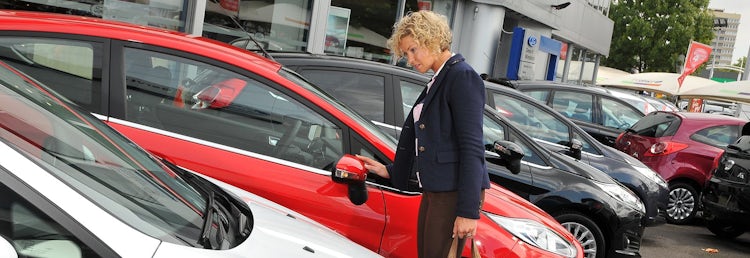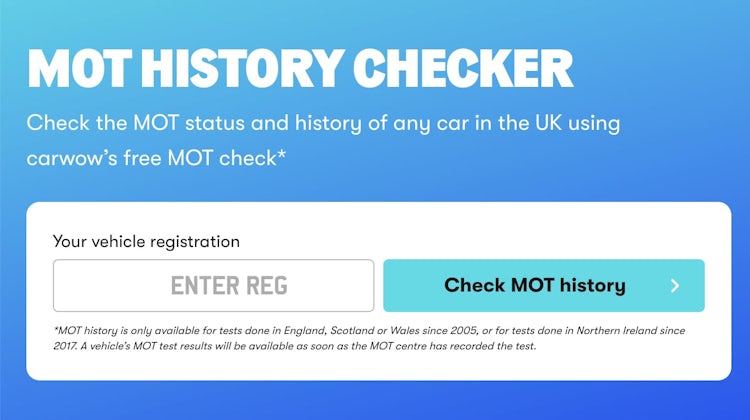Used Hyundai Ioniq 5 cars for sale
Find the right second hand Hyundai Ioniq 5 for you through our network of trusted dealers across the UK
Looking to buy a used Hyundai Ioniq 5? Get a full car history check
How buying a used car through carwow works
Find a car
Use carwow to browse and compare used vehicles, advertised by a network of trusted dealers. You can search by make and model, or apply filters to find the perfect car for you.
Contact the dealer
Once you’ve found a car you’d like to buy, you can contact the dealer to arrange the next steps, whether that’s asking a question or taking it for a test drive.
Buy the car
When you’re happy to buy, you can do so at a fixed price, safe in the knowledge all models sold through carwow are mechanically checked and come with a warranty.
Used Hyundai Ioniq 5 pros and cons
Sell your car for what it's really worth
The free, easy way to get 5,500+ dealers all over the UK bidding on your car
Is a second hand Hyundai Ioniq 5 a good car?
Proof that electric cars don’t have to be shapeless blobs, the Hyundai Ioniq 5 riffed heavily on Hyundai’s seventies and eighties design back catalogue for its sharp-edged retro hatchback style. It’s a car that will confuse any Father Ted fans though, because while it looks small when it’s far away, up close it’s genuinely large — easily the same size as a Skoda Enyaq or Ford Mustang Mach-E.
Of course the upside to that size is that the cabin is seriously roomy, and higher-spec versions get plush club-class style seats in the front, complete with retracting footrests, so that you can sit in total comfort while stopping for a charge.
The cabin is also really well made and almost up to luxury car standards, aside from some cheaper bits such as the stubby little gear selector behind the steering wheel. The centre console also optionally slides back and forth, so that those sat in the rear can have a bit more storage space if they need it.
Those front seats are supportive but the driving position could be a bit more adjustable — if you’re tall, you’ll end up sitting with your arms stretching out for the wheel, but your legs splayed out. Space in the back is excellent though, with loads of room for heads and legs.
There’s also a flat cabin floor, so getting three grown-ups in the back is actually pretty easy — although the high floor means that their knees will be stuck up in the air, which isn’t ideal for long journeys — and the doors open wide so getting child car seats, and their occupants, in and out is easy too.
The boot is reasonable, at 527 litres, and there’s some space under the floor and in the nose for charging cables, but it’s still a good bit smaller than what some rivals — especially the Skoda Enyaq — can offer. The Ford Explorer also has a bigger boot than that.
There’s a decent choice of how to power your Ioniq 5. The basic model, before the recent tech update, came with a 58kWh battery and a 168hp motor driving the rear wheels. That only had a range of 238 miles — although to be fair to Hyundai, the Ioniq 5 was more reliable than many others in how much of its claimed range it could deliver, with 220 miles being realistic on one charge — so many went for the larger 72kWh battery, which had a range of up to 298 miles for the version with the 214hp rear-drive motor, and a little less for the 301hp all-wheel drive model. Later on, the rear-drive 214hp model was upgraded to a 228hp motor, while the all-wheel drive version was boosted to 321hp. The range also improved a little, with the rear-driven, big-battery version now hitting 315 miles of claimed range.
Hyundai has given the Ioniq 5 super-fast 800-volt charging too, which means that it can take up to 220kW of DC charging power, meaning that from the fastest chargers you can top up to 80% in less than 20 minutes. Slower charging on AC power runs at up to 11kW, but on a 7.4kW home charger a big-battery Ioniq 5 will take almost ten hours to fully charge up.
In any form, the Ioniq 5 is an easy-going car to drive, with light steering and a great view out through big windows all-round. Although it’s big enough to count as an SUV, it feels a little lower-slung and more agile than most alternatives, and while the suspension isn’t quite as smooth over bumps as, say, a VW ID4, generally it’s very comfortable and refined.
It’s also better to drive than you might think. It’s not as much fun as a Mustang Mach-E, but there’s plenty of grip and some sense of driver appeal. If you want to stretch that to its ultimate, then you need to go for the amazing 650hp Ioniq 5 N, but that’s a brand-new model and won’t be troubling used buyers for a while yet.
All models come with active lane-keeping steering and adaptive cruise control, but you’ll end up turning the lane-keeping system off most of the time, as it reacts too aggressively for comfort.
The Ioniq 5 has been a big seller since Hyundai introduced it, and that means there’s plenty of choice in the used market. It’s a stylish and swish electric car, with more character than you might expect and, in the big-battery versions, plenty of range too.
What to look for when buying a used Hyundai Ioniq 5
It’s a little early to tell how reliable the Ioniq 5 will be in the long term as it’s still quite a new model, but the main thing to check is the battery. If the car doesn’t come with an independent battery health check, consider getting it done before you buy. The Ioniq 5’s battery and battery management system are still quite up to date, so there are no major concerns, but you just want to be careful about any rogue issues.
Hyundai gives the batteries an eight-year, 100,000-mile warranty while the rest of the car is covered by the usual five-year, unlimited mileage warranty.
Hyundai, as a brand, finished mid-table in the most recent Driver Power owner survey, in 17th place out of 32, with 22.8% of owners reporting an issue with their cars.
Hyundai Ioniq 5 FAQs
Used car buying guides
Hyundai Ioniq 5 transmissions
Hyundai Ioniq 5 colours
Popular used car models
- Used Audi A1 Sportback
- Used Citroen C5 Aircross
- Used Fiat 500
- Used Ford Fiesta
- Used Hyundai i10
- Used Hyundai Ioniq 5
- Used Jaguar E-PACE
- Used Jaguar F-PACE
- Used Jaguar I-PACE
- Used Kia Ceed
- Used Kia Niro
- Used Kia Picanto
- Used Kia XCeed
- Used Land Rover Defender 110
- Used Mazda CX-5
- Used Mercedes-Benz A-Class
- Used Mercedes-Benz CLA
- Used Mercedes-Benz GLA
- Used MG MG4 EV
- Used MG ZS
- Used Peugeot 208
- Used Peugeot 3008
- Used Polestar 2
- Used Renault Clio
- Used SEAT Ateca
- Used SEAT Ibiza
- Used SEAT Leon
- Used Skoda Kodiaq
- Used Toyota Aygo X
- Used Toyota Yaris Cross
- Used Vauxhall Corsa
- Used Vauxhall Grandland X
- Used Vauxhall Mokka
- Used Volkswagen T-Cross
- Used Volkswagen Tiguan
* In line with the Consumer Rights Act 2015










